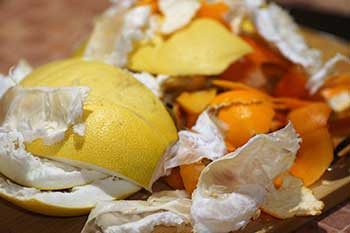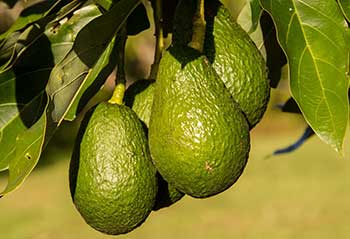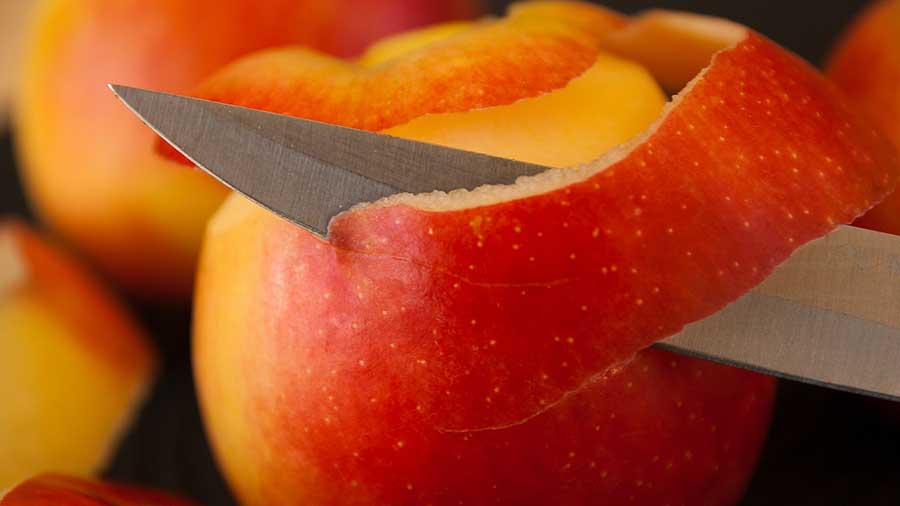One common waste found in the kitchen is fruit peels. Normally, you would just throw them away in the trash bin. However, if you have a garden, it is better to use fruit peelings as organic fertilizer for your plants.
Sure, there are many commercially available fertilizers but using organic fertilizers can be so satisfying. Recycling kitchen wastes and turning them into something useful makes you feel that you are helping the environment.
Converting fruit peels into fertilizers is a worthwhile thing to do. But are fruit peels good for plants? Based on US Department of Agriculture data, aside from containing vitamins, fruits also contain a nutrient called potassium. Potassium is needed by plants in the production of flowers and fruits. It helps plants in reaching maturity by playing a big role in the absorption of water and nutrients from the soil. In addition, potassium can also boost the immune system of plants.
Some fruits may contain more potassium than other fruits but still having an organic source of potassium for your plants is still better than nothing.
The Role of Potassium in Plant Growth
Potassium is one of the primary nutrients needed by plants. The 3 primary nutrients that are essential to the growth and reproduction of plants are Nitrogen (N), Phosphorus (P), and Potassium (K). Nitrogen is for the production of chlorophyll. It makes the leaf green. If the leaves of a plant turn yellow, it is a sure sign of nitrogen deficiency. Phosphorus is responsible for the growth rate of the plant. It helps the plants grow by ensuring proper root development.
Potassium, on the other hand, is responsible for:
- better photosynthesis
- absorption of water and nutrients
- flower and fruit production
- making the plant strong and sturdy
- strengthening the plant immune system
- ensuring bigger and more tasty fruits
Fruits that are Rich in Potassium
The table below shows the nutrient content of some common fruits. The data is based on SNAP-Ed U.S. Department of Agriculture.
Fruit | Serving Size (grams) | Potassium (mg) | Calcium (mg) |
Avocado | 201 g (medium-sized) | 973 | 23 |
Banana | 118 g (medium-sized) | 517 | 78 |
Zucchini | 196 g (medium-sized) | 512 | 31 |
Cucumber | 301 g (medium-sized) | 442 | 48 |
Squash | 116 g (1 cup) | 404 | 33 |
Mango | 165 g (1 cup) | 277 | 18 |
Apple | 182 g (medium-sized) | 193 | 10 |
Carrot | 61 g (medium-sized) | 193 | 20 |
Watermelon | 152 g (1 cup) | 169 | 10 |
Lemon | 58 g (medium-sized) | 80 | 23 |
Fruit Peels Contain Secondary Macro Nutrients
Aside from the primary macronutrients (Nitrogen, Phosphorus, and Potassium), plants also need secondary macronutrients. The important secondary nutrients are calcium, magnesium, and sulfur. Plants need these nutrients in smaller quantities as compared to the primary nutrients.
Calcium makes the stem sturdy. It strengthens the cell walls and membranes of the plant. This is mostly needed by seedlings because their stems are not yet strong enough. It also helps in the flowering and fruiting stage.
According to Mississippi State University, magnesium is the central core of the chlorophyll molecule in plant tissue. Thus, if Mg is deficient, the shortage of chlorophyll results in poor and stunted plant growth. Magnesium also helps to activate specific enzyme systems. Enzymes are complex substances that build, modify, or break down compounds as part of a plant's normal metabolism.
Sulphur helps in seed production. It also aids in the movement of nutrients to all parts of the plants. It helps the plant in absorbing the nutrients from the soil.
When to use Fruit Peels as Plant Fertilizer?
A usual sign of potassium deficiency is when the plant has a thin stem. Sometimes the stem can get wobbly or “leggy”. When plants show this characteristic, it is important to apply a fertilizer that is rich in potassium. Another sign is when the leaf edges turn brown, then dries out. This is called chlorosis. It happens when the leaves start drying at the edges then eventually spreads towards the center of the leaves. At this point, the plant starts shedding its leaves. You may also have observed in your pepper or tomato plants, or any fruiting plant, that it’s not producing enough flowers. If you want the flower production to increase, then consider applying potassium-rich fertilizers such as fruit peels. Of course, there are also other commercially available plant fertilizers. Usually, they are labeled as N-P-K (Nitrogen-Phosphorus-Potassium). Make sure to get the one with a higher potassium (K) content.
Burying Fruit Peels in the Soil
Like all organic matter, fruit peels can simply be buried in the soil and turned into compost. This process involves good microorganisms in the soil breaking down the organic matter. As the microbes break down the fruit peels, it leaches the potassium into the soil which will then be absorbed by the plant. However, one downside to this is the time it takes for the fruit peels to decompose. It could take weeks or months before the fruit peels begin to give up their precious potassium. Digging into the soil also poses a problem. You could end up destroying the roots while digging. Worst, the smell of rotting fruits could attract pests and rodents. They could dig into the soil and destroy your plant’s root system. I would not advise this in container gardening.
Scattering Fruit Peels on the Soil

Organic matter tends to decompose faster when exposed to air. Scattering the fruit peels on top of the soil can actually be a good idea. To fasten the decomposing process, just cut or chop the peels into smaller pieces. Again, the presence of good microorganisms in the soil will break down the fruit peels for the potassium to leach into the soil. For even faster results, you may use a food processor or blender to grind the peels into a pulp. Add a bit of water to make an even finer texture. To apply it, I just pour it gently into the soil. Again, there is a downside to this process. When scattering vegetable or fruit material on the soil, you attract snails and slugs. They love to feast on these tasty fertilizers. Snails and slugs are also good at eating the soft leaves and stems of your plants. A few hours of snails eating your plants could kill them. Be sure that when you scatter fruit peels on the soil, there are no snails and slugs in the area. They are active during the night so you might not have a chance to catch them.
Making a Fruit Peel Tea Fertilizer
A safer way to use fruit peels as fertilizer is to make them into tea. Well, technically it is called an infusion. When you pour boiling or very hot water on fresh or dried parts of a plant and let it soak or steep for a minute or two, you’re generally preparing a tea. In this case, we will be soaking the fruit peels in water. But to get the most benefit out of the fruit peels, you may need to let it steep longer. When you do this, you’re now making an infusion. The main idea here is to let the water absorb the potassium from the fruit peels.
Here are the steps in making a fruit peel tea fertilizer:
- Wash the fruit peels first to remove excess dirt. There may be bad microorganisms present in the dirt which could contaminate the mixture and may harm your plants.
- Chop the fruit peelings into tiny bits. You may also just use a pair of scissors to slice the peels into thin strips. Fruits peels about 100 – 200 grams is enough to make a 1-liter liquid fertilizer. You may also use a food processor or blender to achieve a finer texture. The smaller the fruit peel pieces, the more potassium we can get from them.
- Place the fruit peels into a container. A 1-liter plastic soda container is a good option. Just make sure that the container can be sealed tightly. We don’t want any insects laying their eggs on the liquid.
- Fill the container with water. You may use regular tap water here. Seal the container properly.
- Let it sit for 24 hours.
After 24 hours, it is now ready to apply as fertilizer. We can use it on all kinds of plants, on leafy vegetables, especially on flowering and fruiting plants. To apply, just filter out the solid particles and use the liquid to water or drench your plants with it. You can also use it as a spray. Just spray it on to the leaves of the plant. The solids can be thrown into your compost bin if you have one. If not, just simply scatter it on the soil. Just be careful with the snails and slugs.
How Effective are Fruit Peels as Organic Fertilizer?
Using fruit peels in the procedures mentioned above may not be enough for your plants. Nonetheless, it is better than nothing. Plants will grow healthier by watering them with fruit peel tea instead of just plain water. If you are really serious about your plants’ health, then I would suggest processing the fruit peels further.
When we simply soak our fruit peels in water, we are not completely extracting all the potassium inside the fruit peels. To fully take advantage of the potassium found in fruits, we need to do a process that involves fermentation.
Fermentation is a procedure in which we extract potassium by using good microorganisms. This will ensure that we get all the nutrients from the fruit peels.
What I usually do is gather all fruits and fruit peelings that are rich in potassium such as bananas, papayas, avocados, apples, cucumbers, and carrots.

Aside from the fruits, you will also need molasses. An alternative to molasses is brown sugar.
Basically, the procedure is to soak the fruits in molasses. The good microbes will then break down the nutrients found in the fruits while using the molasses as their source of food. This is sometimes called a fermented fruit juice fertilizer. I have written another blog about this procedure. To know more about this procedure, click this link.
Making Compost with Fruit Peels
Another way to use fruit peels is by throwing them in your compost bin. I have a small covered bin in my kitchen for my organic kitchen wastes. I simply place my fruit peelings inside the bin. Oftentimes I have banana, carrot, and cucumber peelings. I also include excess vegetables or unused vegetable parts. Once a week I throw all of the contents of my organic bin neatly into my compost pile. What I do with my compost is I add it to my potting soil.









